Description
⚙️ Project Overview
The Design and Development of Wireless Charging for Electric Vehicles project aims to eliminate the need for conventional plug-in charging systems by using inductive power transfer (IPT).
The system transmits electrical energy through magnetic fields generated by a primary coil (transmitter) to a secondary coil (receiver) located beneath the electric vehicle.
This project showcases the working principle of wireless charging technology currently being adopted by major EV manufacturers like Tesla, BMW, and Nissan. It serves as an excellent educational demonstration of resonant inductive coupling, embedded control, and DC charging circuits.
🔋 Working Principle
The project consists of two main parts:
-
Transmitter Section:
-
Connected to the main power supply.
-
Converts AC to high-frequency AC using an oscillator circuit.
-
The transmitter coil generates a magnetic field when energized.
-
-
Receiver Section (Mounted on Vehicle):
-
The receiver coil, placed below the car, captures the magnetic field.
-
Induced current is rectified using diodes and regulated to DC voltage.
-
This DC power is used to charge the onboard battery.
-
The LCD display continuously shows charging voltage and current to monitor performance. The entire process is contactless, safe, and efficient.
🧠 System Components
-
Transmitter Coil & Oscillator Circuit: Generates alternating magnetic field.
-
Receiver Coil: Captures electromagnetic energy and converts it to DC.
-
Microcontroller (Arduino / ATmega328): Displays system parameters.
-
LCD Display (16×2): Shows voltage, current, and charging status.
-
Rectifier and Filter: Converts AC signal from receiver to smooth DC output.
-
Regulator Circuit: Maintains stable voltage for battery charging.
-
Rechargeable Battery (3.7V / 12V): Simulates an electric vehicle battery.
-
Vehicle Model (EV Simulation): Demonstrates real-time charging operation.
🔩 Key Features
-
Wireless Charging System: No physical contact between charger and vehicle.
-
Efficient Inductive Power Transfer: Transmits power through magnetic field coupling.
-
Real-Time Display: LCD shows battery voltage and charging status.
-
Microcontroller-Based Monitoring: Smart and automated operation.
-
Compact Prototype: Easy to demonstrate and understand working principle.
-
Educational and Industry-Relevant: Ideal for EV technology learning and research.
🧰 Technical Specifications
| Parameter | Specification |
|---|---|
| Input Voltage | 230V AC / 12V DC Supply |
| Output Voltage | 5V – 12V DC (adjustable) |
| Charging Method | Inductive Coupling (Wireless) |
| Transmitter Frequency | 20 kHz – 100 kHz |
| Controller Used | Arduino / ATmega328 |
| Display Type | 16×2 LCD |
| Range | 2 – 5 cm Charging Distance |
| Battery Type | Li-ion / Lead Acid Simulation |
| Efficiency | 75 – 85% (prototype level) |
| Protection | Overload and short circuit protection |
🎓 Educational Outcomes
Students will learn:
-
Principles of inductive power transfer (IPT).
-
Wireless energy transmission design using coils and resonant circuits.
-
Embedded system control and LCD interfacing.
-
Power electronics fundamentals including rectification and voltage regulation.
-
EV charging system design and efficiency optimization.
This project bridges electrical, electronics, and automotive engineering concepts, making it ideal for final-year projects, lab demonstrations, and research prototypes.
💡 Applications
-
Wireless charging for electric vehicles (EVs).
-
Smart parking and public charging stations with inductive pads.
-
Industrial AGVs (Automated Guided Vehicles).
-
Consumer electronics charging pads (mobile, drone, robot).
-
Research and academic demonstration for renewable transport technology.
🧩 Advantages
-
Eliminates manual plug-in charging.
-
Contactless and weather-proof operation.
-
Safe for human interaction (low-frequency magnetic field).
-
Easy to integrate into EV infrastructure.
-
Energy-efficient and future-oriented.
-
Excellent learning model for wireless energy systems.
📦 Package Includes
-
Arduino-based wireless charger circuit (assembled PCB).
-
Transmitter coil and receiver coil pair.
-
Vehicle prototype (miniature EV).
-
LCD display module.
-
Battery and charging regulator circuit.
-
Power supply adapter.
-
Documentation (Word + PDF).
-
Block diagram and circuit diagram image.
-
User manual and demonstration guide.

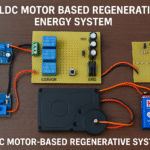

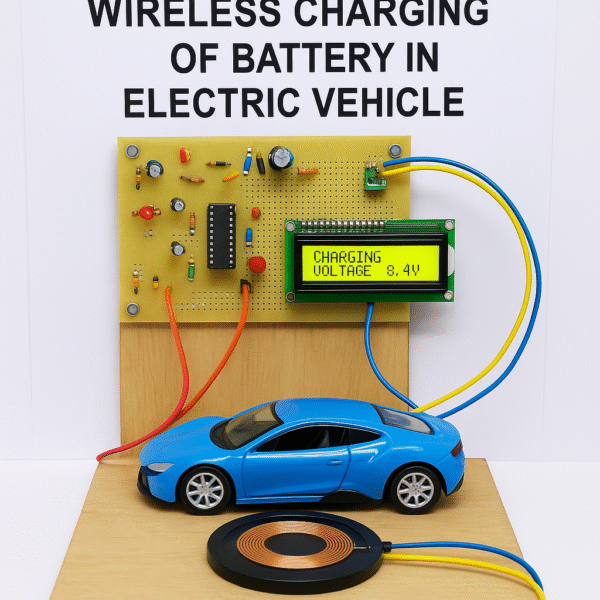
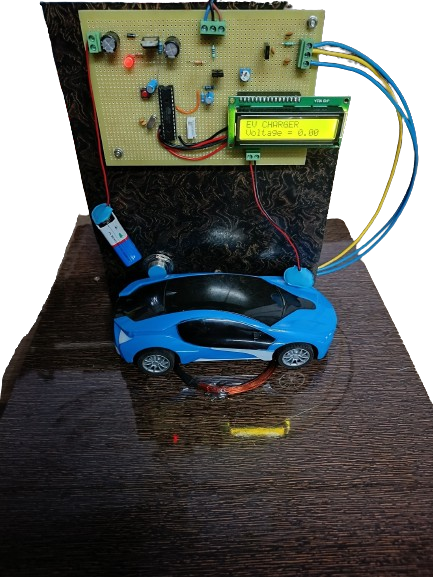
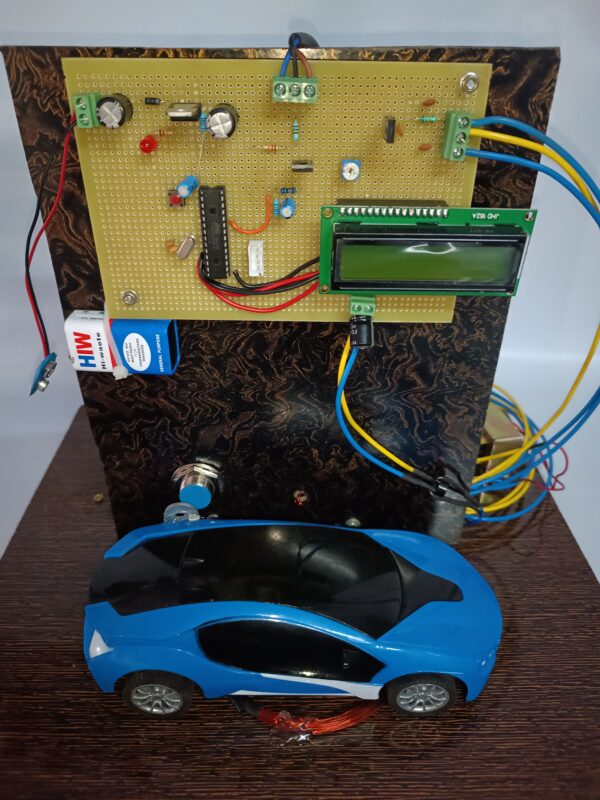
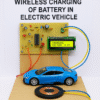
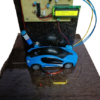
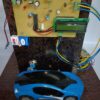
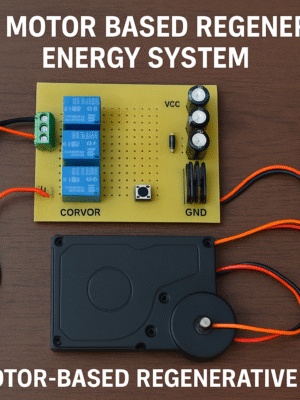










Reviews
There are no reviews yet.